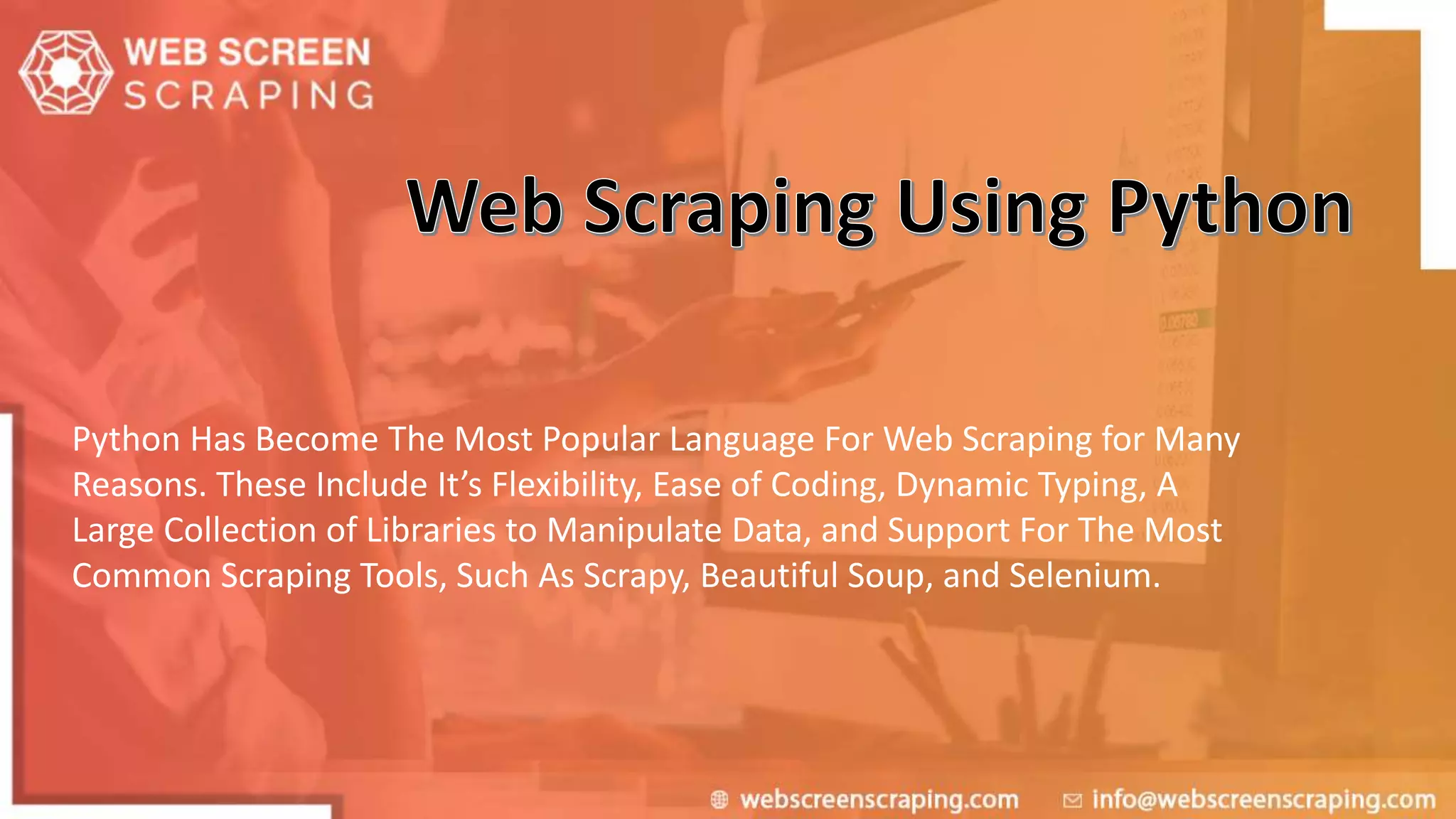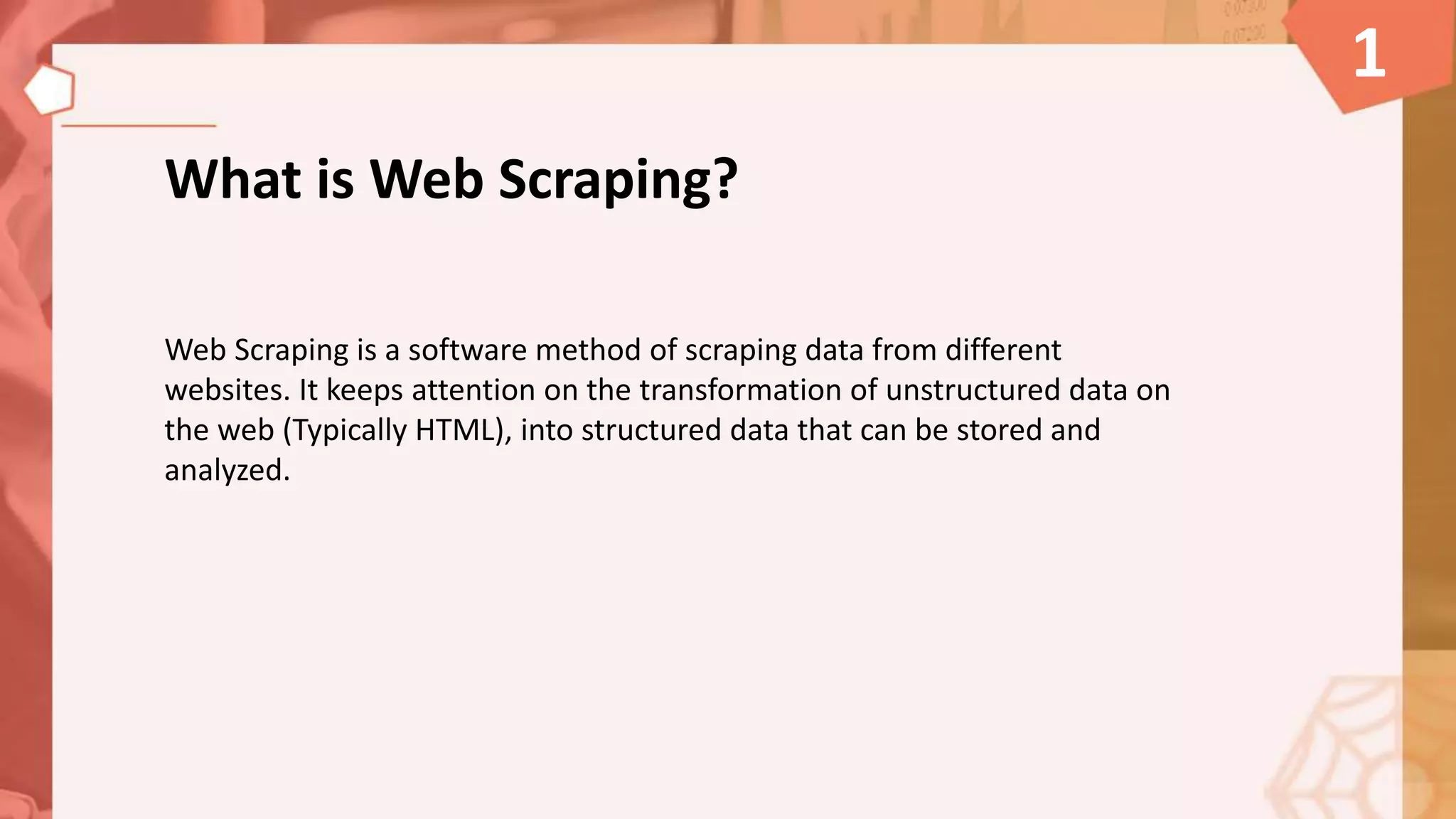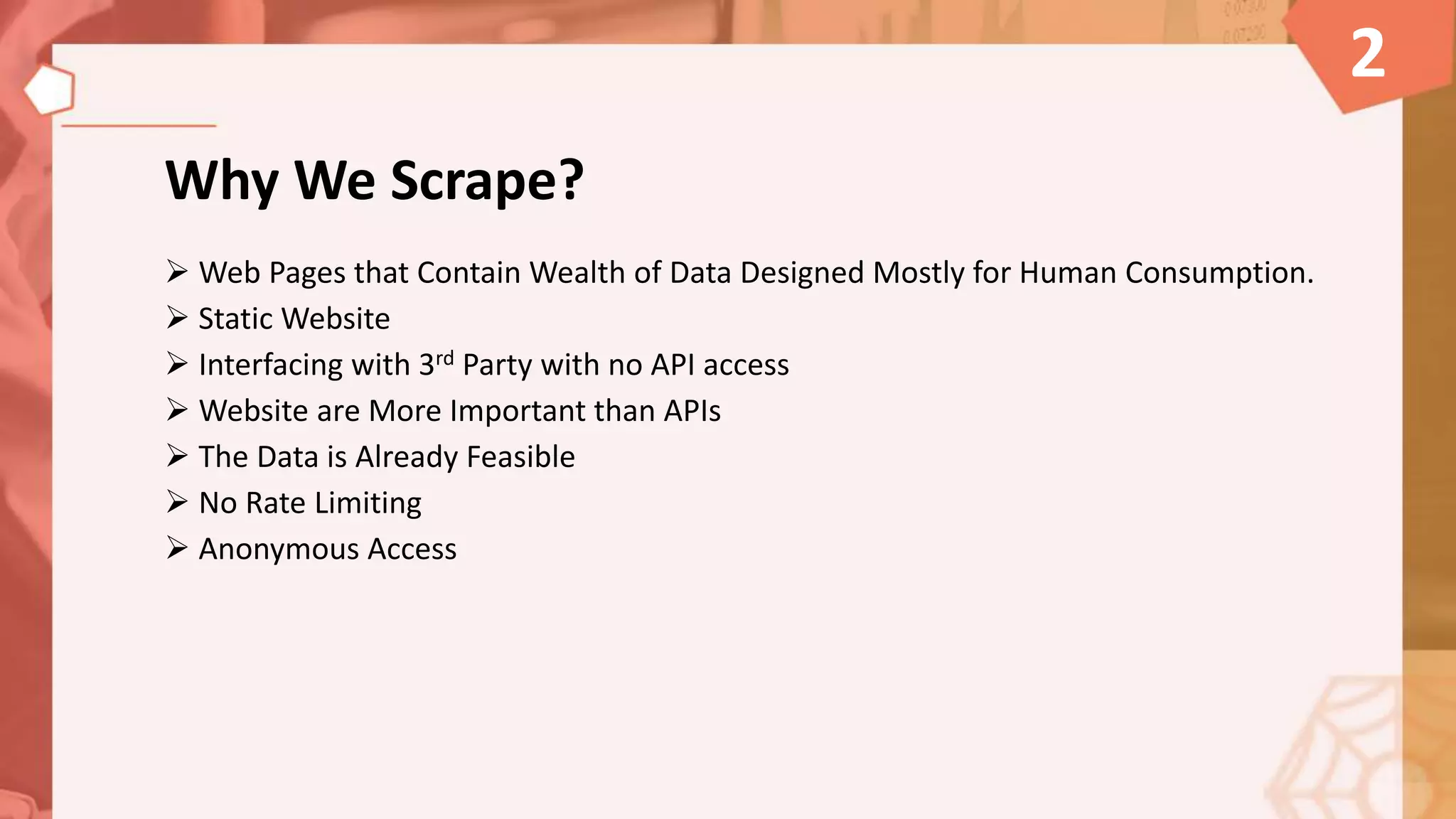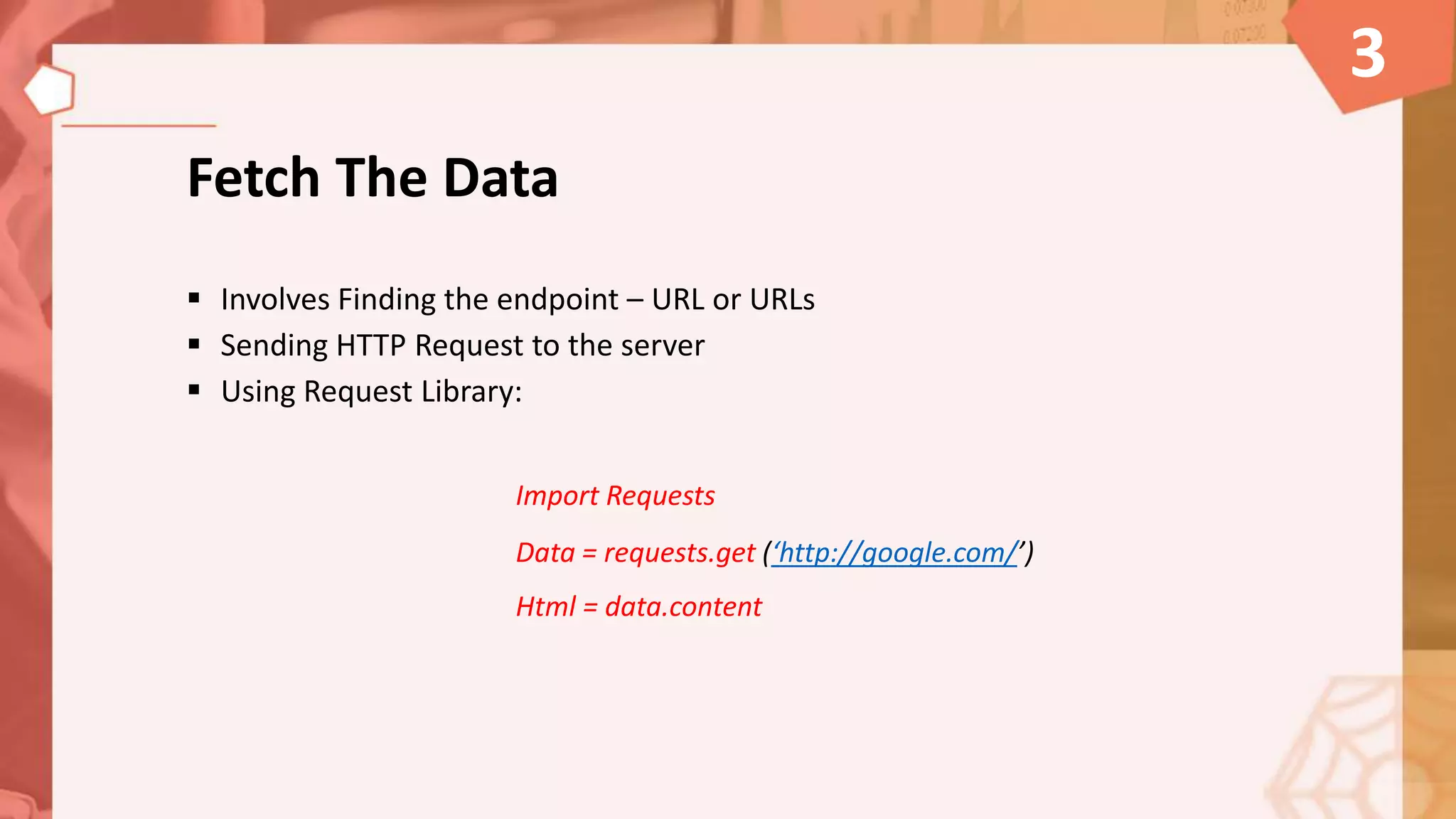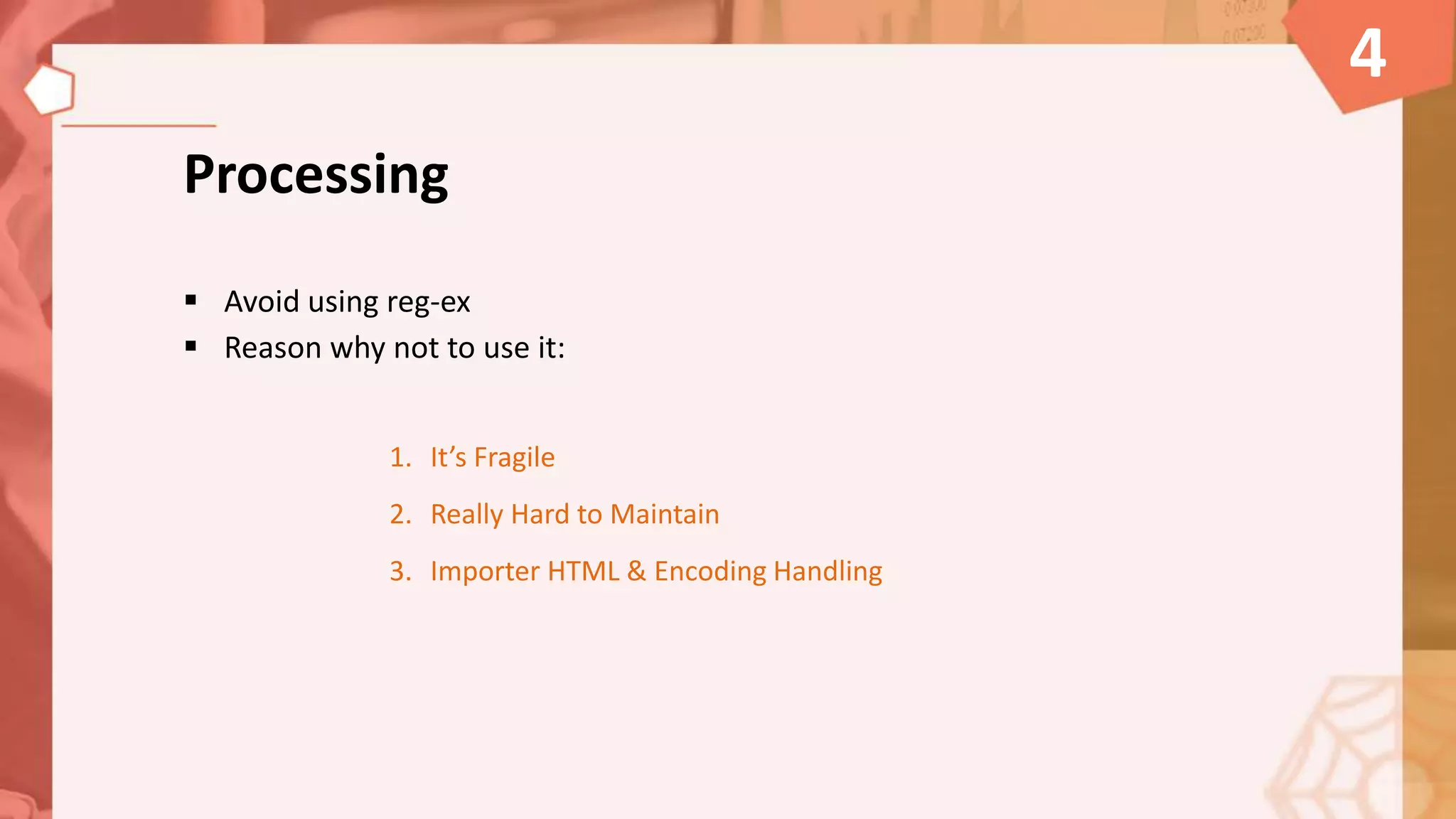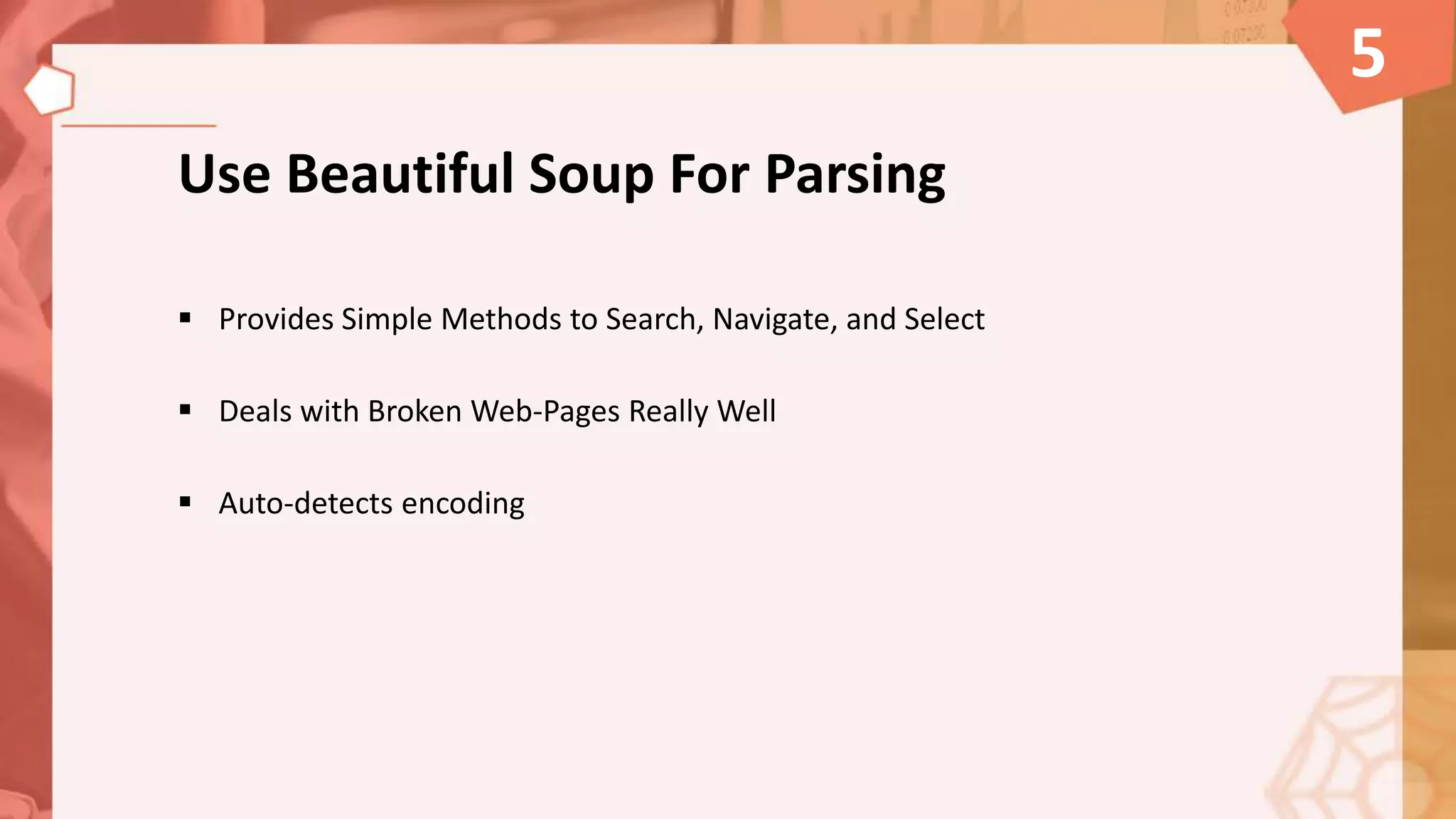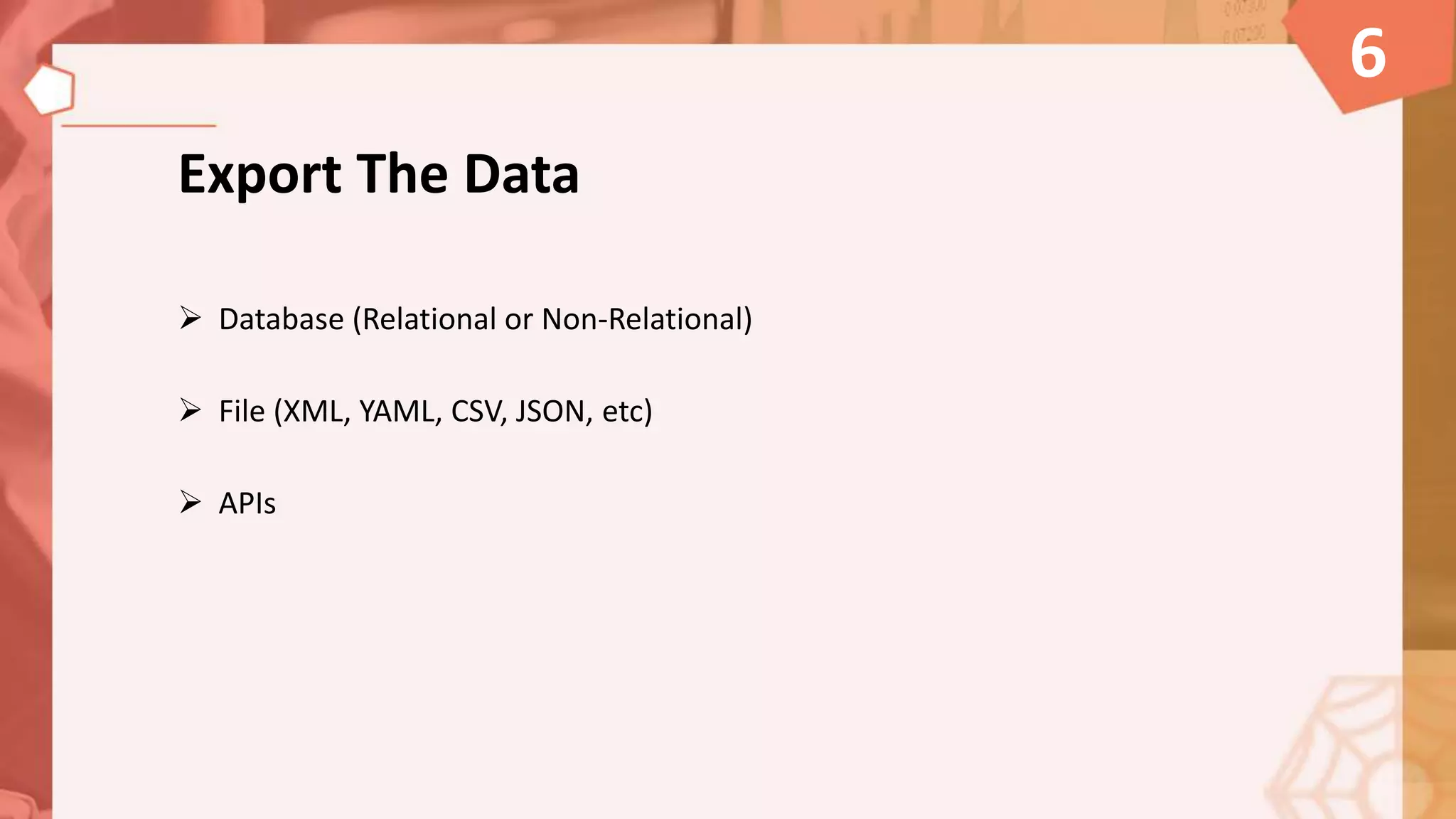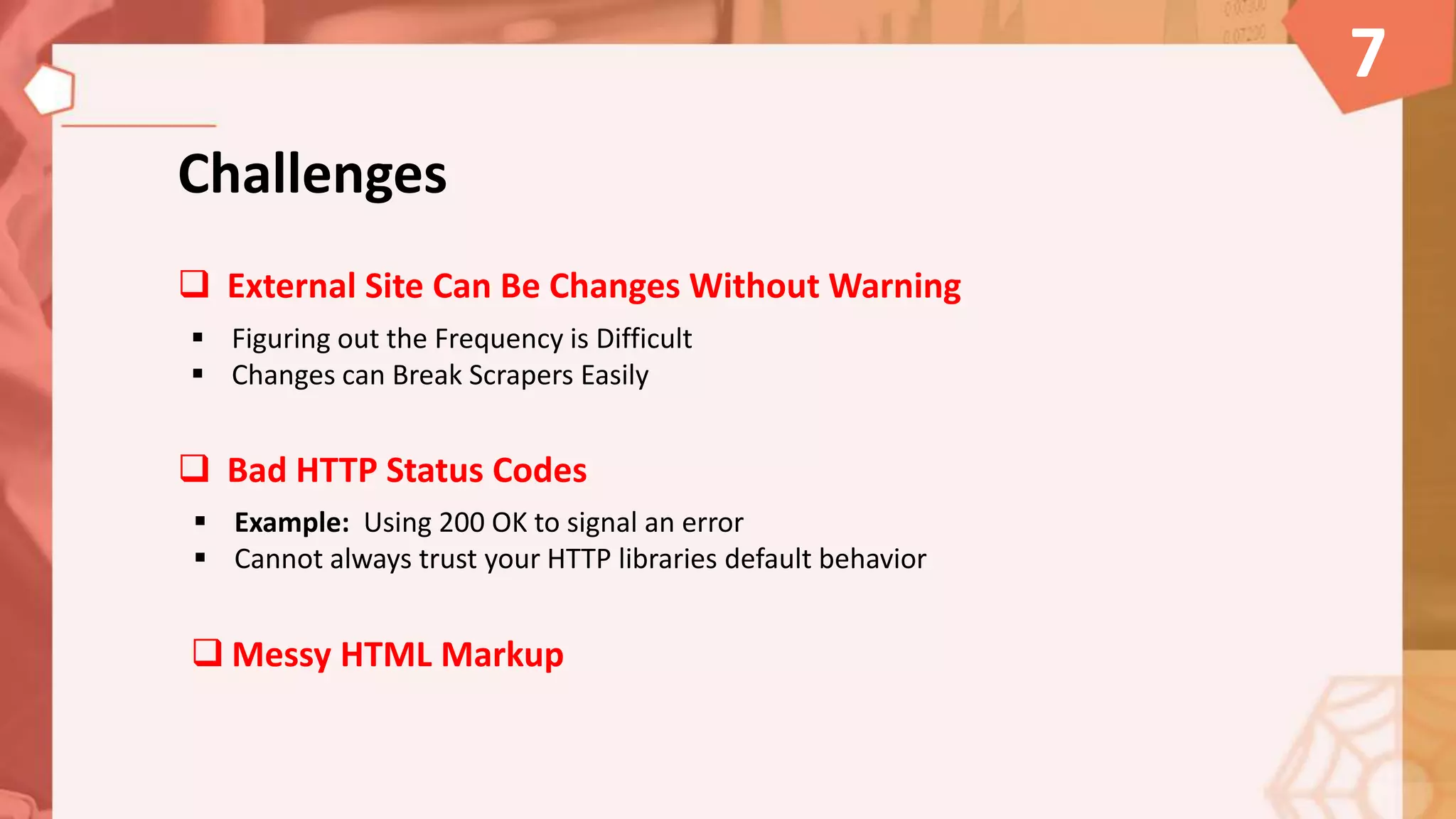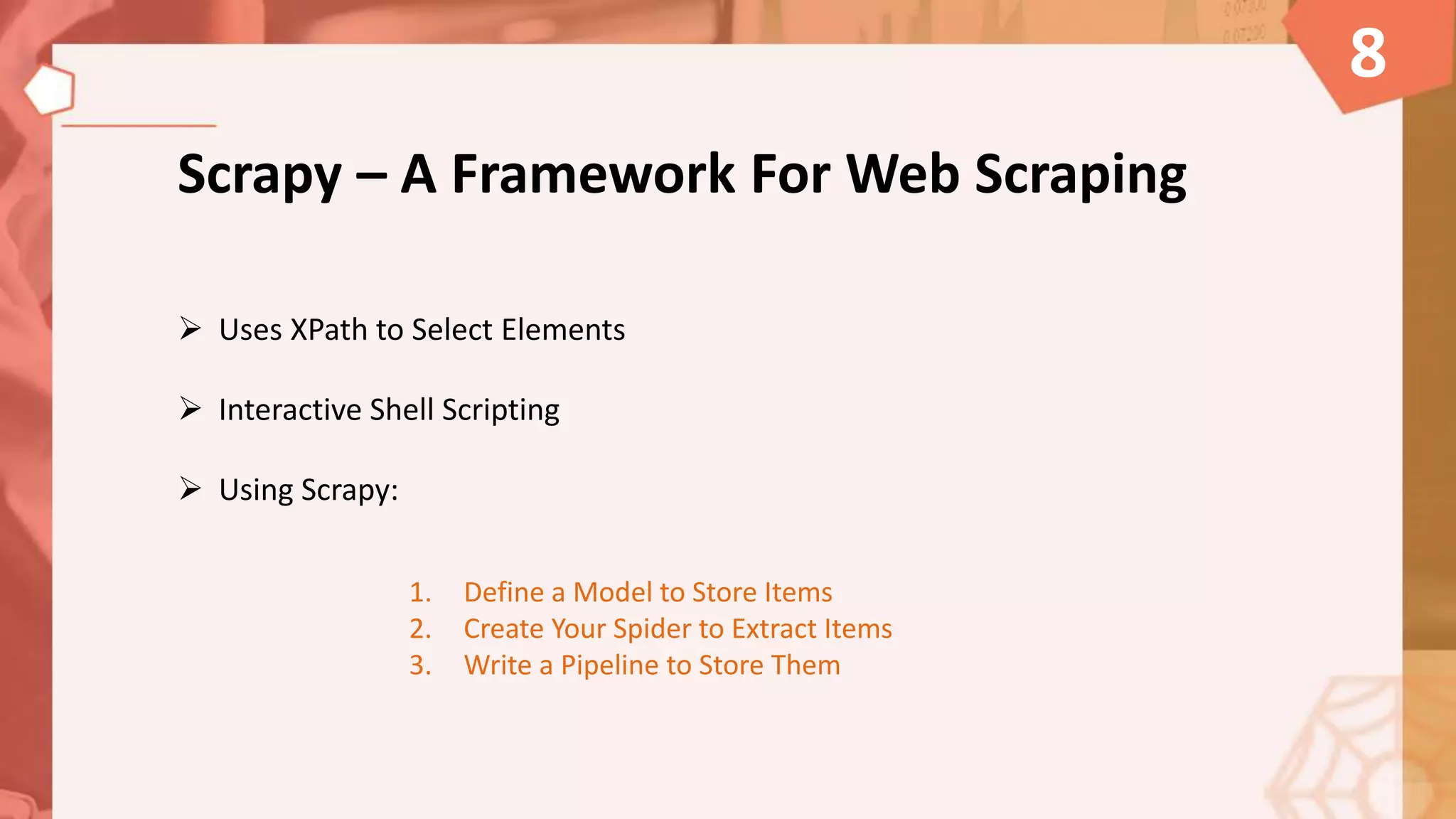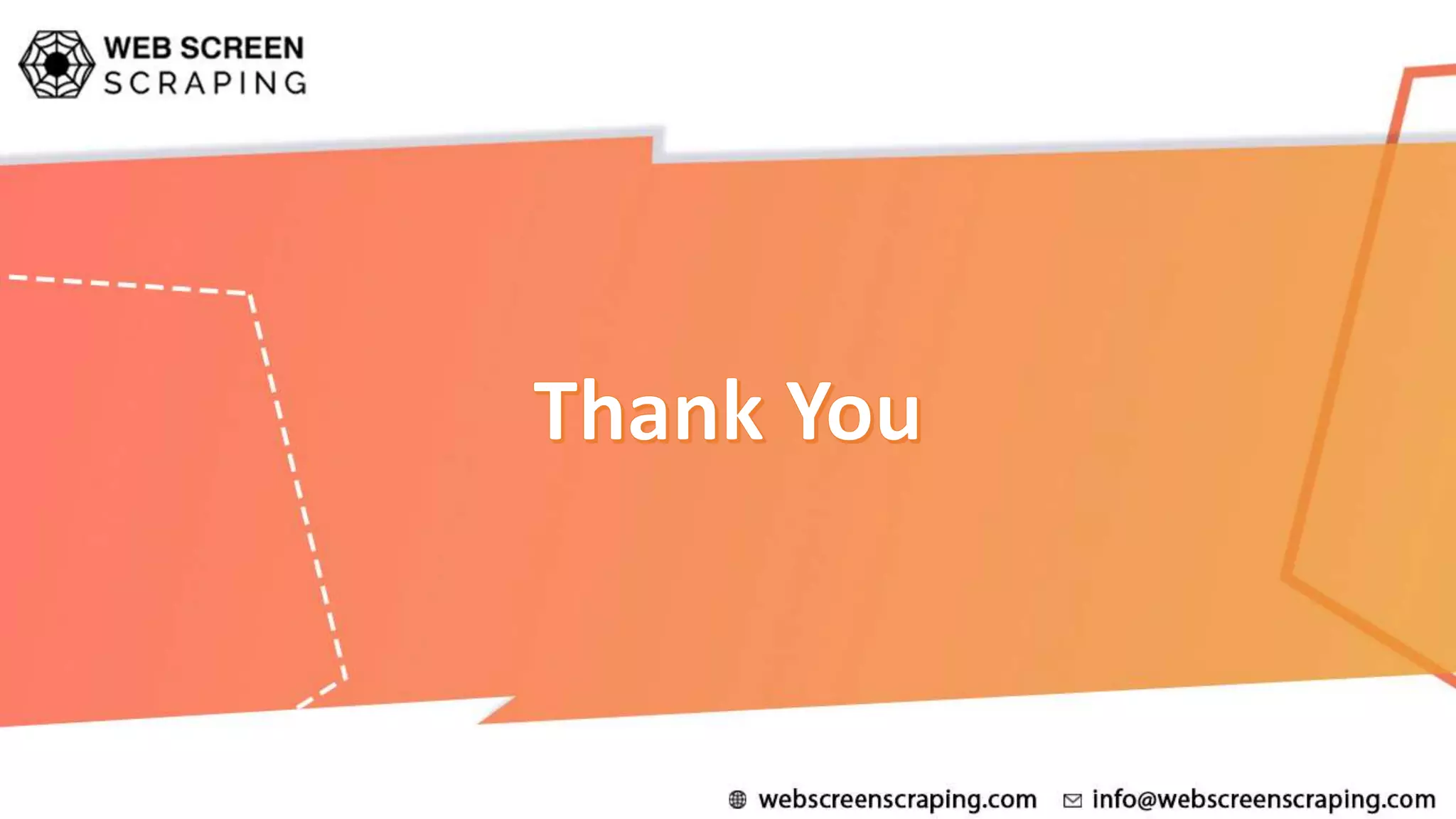Python is the leading language for web scraping due to its flexibility, ease of use, and extensive library support. Web scraping involves extracting data from websites, transforming unstructured data into structured formats, and overcoming challenges such as changing website structures and handling HTTP errors. Key tools include Beautiful Soup for parsing and Scrapy for building web scraping projects.
